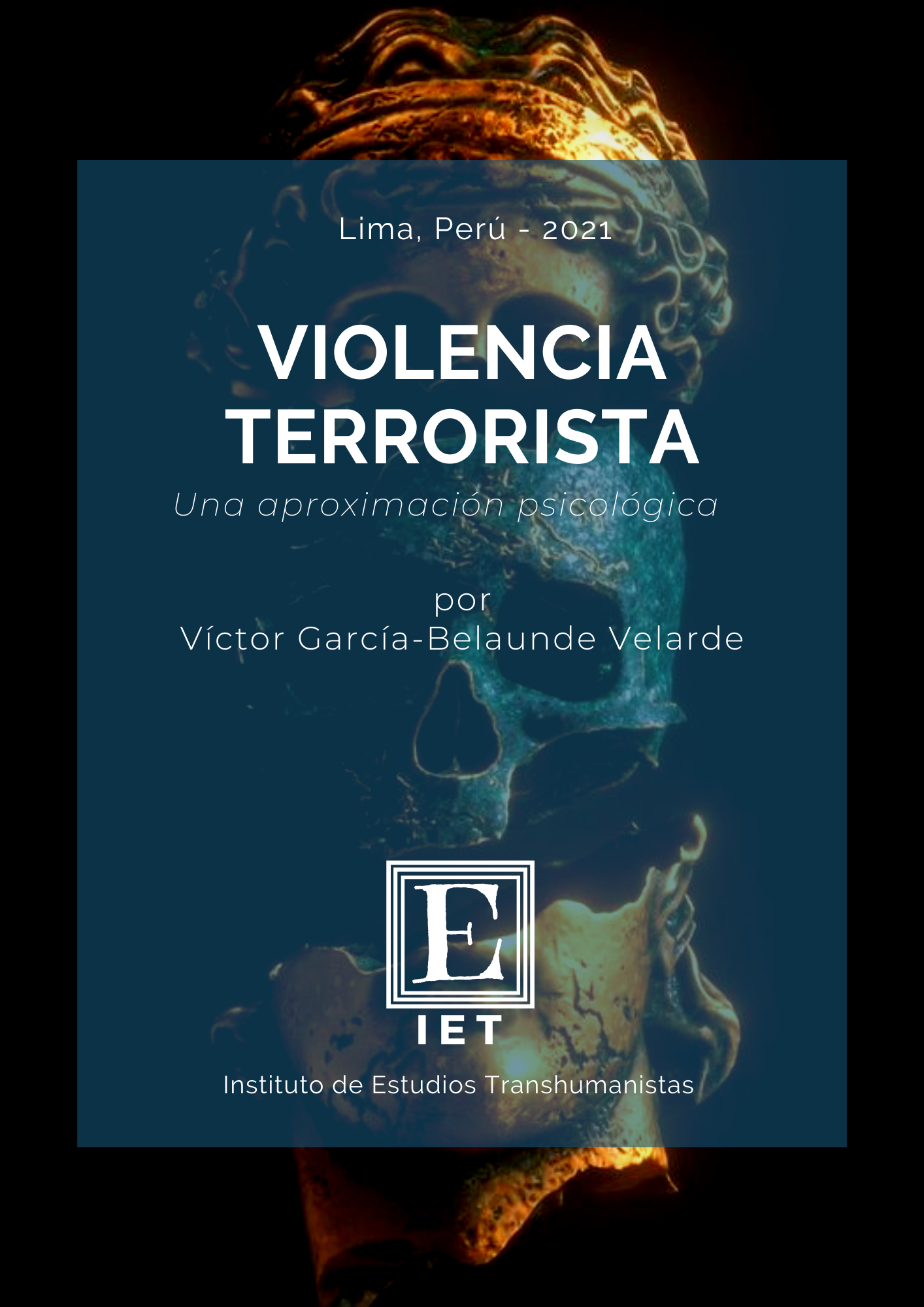Violencia Terrorista
Una aproximación psicológica
DOI:
https://doi.org/10.52749/iet.v4i1.2Palabras clave:
agresión, violencia, terrorismo, psicologíaResumen
La violencia terrorista es una de las grandes amenazas del mundo moderno. Los estados afectados suelen invertir gran parte de sus recursos para aumentar la seguridad ciudadana, las empresas privadas cierran o tiene que ser reubicadas, las inversiones se suspenden y el dinero en los bancos se transfiere al extranjero. Si la situación se agudiza, miles emigran en busca de oportunidades o por miedo a ser asesinados. Por ello, es de suma importancia comprender el comportamiento violento de los terroristas, cuáles son sus causas y en qué circunstancias se desarrolla para poder diseñar estratégicas eficiencias que puedan lidiar con el problema. Primero, revisaremos brevemente el origen del término terrorismo para luego aproximarnos a una definición actual. Segundo, discutiremos diversas teorías sobre la violencia a partir de la psicología, la etología y la biología, tratando siempre de relacionarlas con la agresión terrorista. Por último, examinaremos la estructura de los estudios empíricos sobre terrorismo mediante un ejemplo.
Descargas
Citas
Bandura, A. (1973). Aggression: A social learning analysis. Englewood Cliffs, NJ: Prentice-Hall.
Beck, A. T. (2002) Prisioners of Hate. Behavior Research and Therapy. Department of Psychiatry, University of Pennsylvania.
Berkowitz, L. (Jul 1989) The frustration- aggression hypothesis: An examination and reformulation. Psychological Bulletin.106(1):59-73 PMID: 2667009
[PubMed - indexed for MEDLINE].
Berman, M., Kavoussi, R. & Coccaro, E. (1997) Neurotransmitter correlates of human aggression. Handbook of antisocial behavior. New York: Wiley.
Bonta, J., Law, M., & Hanson, K (1998). The Prediction of Criminal and Violent Recidivism Among
Mentally Disordered Offenders: A Meta-Analysis. Psychological Bulletin, 123, 123-142.
Borum, Randy (2004). Psychology of terrorism. Tampa: University of South Florida.
Brain, P. & Susman, E. (1997) Hormonal aspects of aggression and violence. Handbook of antisocial behavior. New York: Wiley.
Crenshaw, M. (1988) The subjective reality of the terrorist: Ideological and psychological factors in terrorism. Hampshire: Macmillan.
Dodge, K. & Schwartz, D. (1997) Social information processing mechanisms in agressive behavior. In D. Stoff, & J. Breiling, (Eds.) Handbook of antisocial behavior. New York: John Wiley & Sons, Inc.
Hartwig, Robert P. (2004) The Cost of Terrorism: How Much Can We Afford? Insurance Information Institute, New York.
Laplanche, Jean et Pontalis, J.B. (1974) The Language of Psycho-Analysis, Editeur: W. W. Norton & Company, , ISBN 0-393-01105-4.
Lorenz, Konrad (1974, c1966). On aggression. A harvest edt. New York: Harcourt Brace Jovanovich –
XIV, 306 pages. ISBN 0-15- 668741-0 (A Helen and Kurt Wolff book)
Oots, Kent & Thomas Wiegele (1985) Terrorist and Victim: Psychiatric and Physiological
Approaches. Terrorism: An International Journal 8(1): 1-32.
Pickett, Joseph P. et al. (2000) The American Heritage Dictionary of the English Language, Fourth
Edition, Boston.
Post, J. (15 November, 2001) The Mind Of The Terrorist: Individual And Group Psychology Of
Terrorist Behavior. Testimony prepared for Subcommittee on Emerging Threats and Capabilities, Senate Armed Srvices Committee. 16.Raine, A. (1997) Antisocial behavior and psychophysiology: A biosocial perspective
and a prefrontal dysfuntion hypothesis. Handbook of antisocial behavior. New York: Wiley.
Skinner, B. F. (1971) Beyond Freedom and Dignity, Publisher New York, United States, ISBN 0-394-
-3.
Tedeschi, J. & Felson, R. (1994) Violence, Aggression and Coercive Actions. Washington, DC:
American Psychological Association.

Descargas
Publicado
Cómo citar
Número
Sección
Licencia
Derechos de autor 2021 Víctor García-Belaunde

Esta obra está bajo una licencia internacional Creative Commons Atribución 4.0.
El autor de cada artículo o contribución académica publicada en la revista del Instituto de Estudios Transhumanistas se compromete a otorgar derechos de uso a otros gracias al registro en Creative Commons BY 4.0 que la Editorial ha tramitado para su obra. Esto permite el acceso gratuito e inmediato a la obra y permite a cualquier usuario leer, descargar, copiar, distribuir, imprimir, buscar o vincular acceder a los textos completos de los artículos, rastrearlos para indexarlos, pasarlos como datos al software o utilizarlos para cualquier otro propósito legal. Cada autor mantiene los derechos de su obra. La revista del Instituto de Estudios Transhumanistas posee los derechos de publicación de cada artículo. La revista no se responsabiliza por los comentarios vertidos por cada autor.



